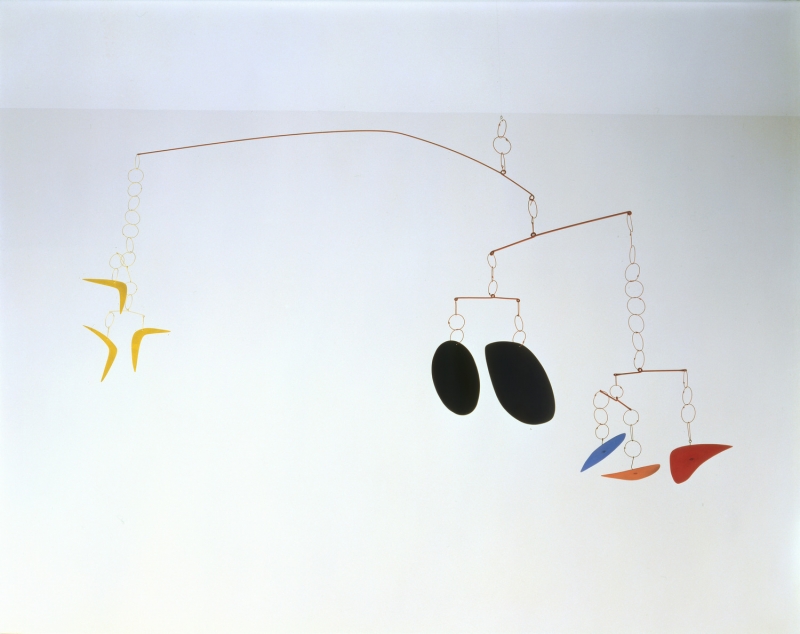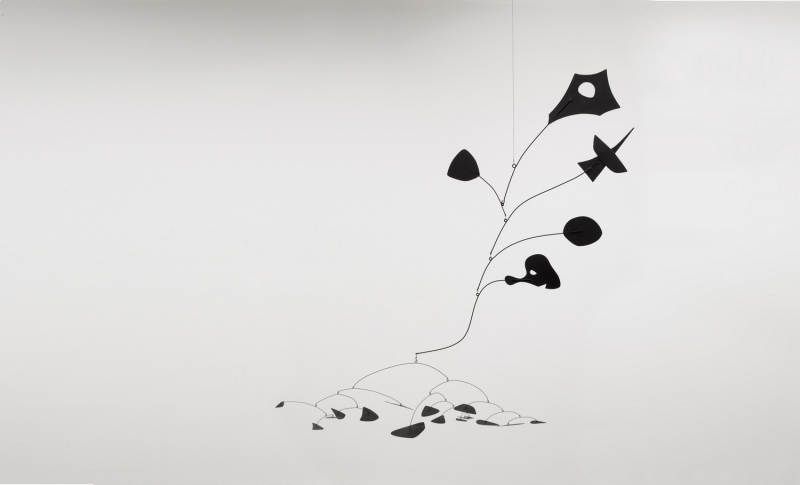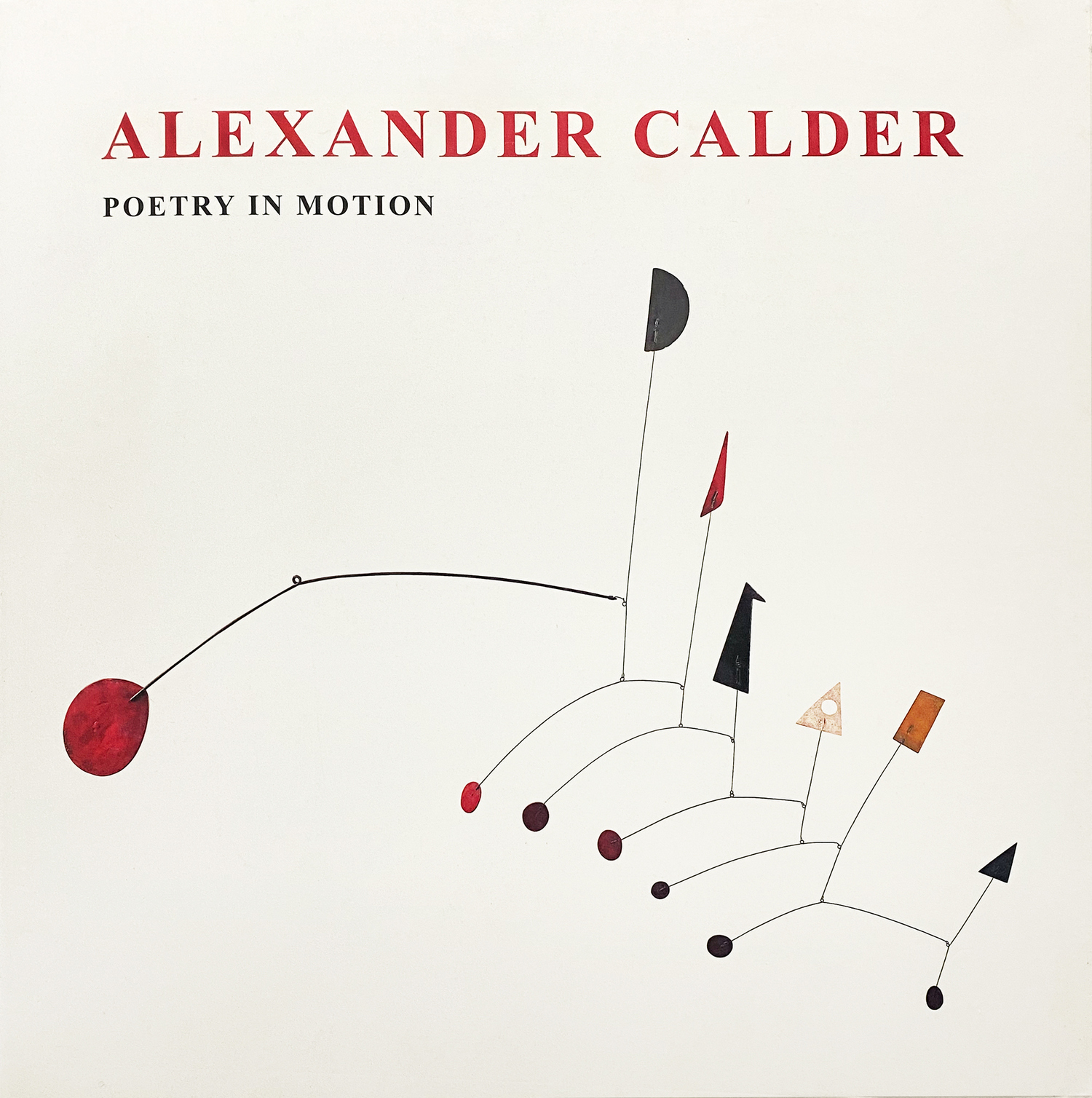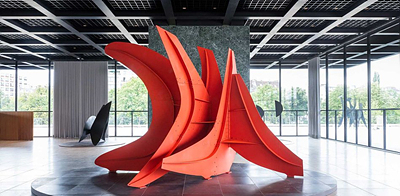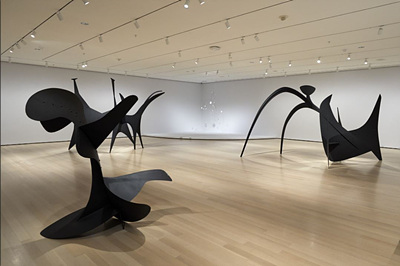 Alexander Calder | KUKJE GALLERY
Alexander Calder | KUKJE GALLERY
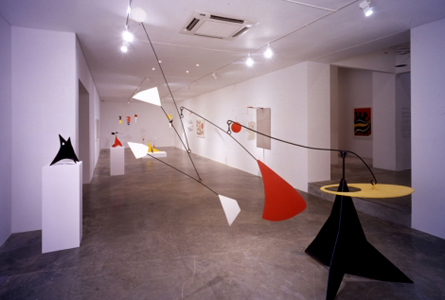
Dec 18, 2003 - Feb 27, 2004
INTRODUCTION
Known throughout the world as the creator of the 'mobile', Alexander Calder is one of the great formal innovators of 20th-century art. Since the first major exhibition of Calder's works titled Calder's Festival, at the Sonje Museum of Art, Kyung-ju in 1993, this exhibition at Kukje Gallery presents the breadth of his prolific and diverse career by concentrating on the best examples of his sculpture including early hanging mobiles, standing mobiles and stabiles ranging from small-scale to monumental works.
Born in Philadelphia to a family of artists, Alexander Calder was already making art as a child. Though he studied mechanical engineering at the Stevens Institute of Technology in Hoboken, New Jersey, he continued to pursue his interest in art by taking drawing and painting classes at night at the Art Students League in New York. Beginning in 1926 he began making his own miniature circus and gave frequent performances at his studio to friends and critics in Paris. As a sculptor, Calder applied technical skills acquired as an engineering student and created works with electric motors in early 1930s. These works demonstrate the strong influence of the 2 major movements of early 20th century art: Furturism, which heralded the machine, and Constructivism, which introduced the use of various industrial materials and forms in art.
The exhibition at the Kukje Gallery consists of 3 major types of work that Calder created. There are important examples of 'ceiling-hung mobiles', works begun in 1932 that are powered entirely by the wind. The 'standing mobiles' are constructions with a fixed base and moving parts on top. The exhibition presents a variety of Calder's mobile formulas, each piece composed of an eclectic range of materials such as sheet metal, rods, wire and wood, pieces of glass and porcelain, string and other found objects. There are also 'stabiles', sculptures that do not have moveable parts and range from small-scale to monumental size. In addition to the sculptures, there is a group of gouaches done in 1976, the last year of his life. At Mondrian's studio, Calder was deeply impressed by the power and intensity of purely geometrical forms and wished to make these forms move in space. Inspired by man and nature alike, sight and sound, reality and fantasy, Calder's art has exuberance and buoyancy which brings pleasure and delight to anyone in private as well as public spaces.
The unpredictable movements in his mobile make free-flowing drawings in space. Calder's mobiles are composed of lines and planes but are never 2-dimensional. As they hang in space, they float freely without any predictable program, and with movement the element of time is introduced into the work. Calder's mobiles break free with the notion of sculpture as object fixed in space, occupying a specific area, and continue to change and expand the space. The fundamental ideas underlying Calder's art come from the basic laws and forces of the universe. Whether seen up close or at a distance, Alexander Calder's art seems to possess both a touch of magic and witchcraft, never precisely still, never exactly the same.
움직이는 조각 ‘모빌(mobile)’의 창시자로서 세계적으로 잘 알려진 알렉산더 칼더는 20세기 조각사의 중요한 획을 그으며 현대미술의 특성을 더욱 확장시킨 중요한 인물이었다. 국내에서는 1993년 경주 선재 미술관에서 ‘칼더의 축제’라는 전시회로 처음 소개 되었으며, 그 이후 10 년 만에 개최되는 국제갤러리에서의 전시에서는 더욱 폭넓은 작품 세계를 선보이게 된다.
미국 펜실바니아 출신의 칼더는 이미 어릴 적부터 기계에 관심이 많아 스스로 도구나 장난감을 만드는 취미를 가지고 있었으며, 대학에서 기계공학을 전공하였지만 할아버지와 아버지가 잘 알려진 조각가이고 어머니 또한 화가였던 집안 분위기 속에서 25세의 나이로 뉴욕의 아트스튜던트 리그에 입학하여 본격적으로 미술공부를 시작하게 된다. 1927년 친구들과 서커스 모형 공연을 열어 파리의 서커스 평론가들로부터 열광적인 평을 받은 칼더는 철사 조각으로 재미있고 다양한 표현을 보여주게 되었다. 조각가로서 칼더는 자신이 공학도로서 배웠던 기술을 적용하여 기계를 이용하여 초기의 움직이는 작품을 만들었다. 이는 20세기 초 유럽의 주류 화단에서 성행하였던 기계에 대한 찬미를 보여준 미래주의와 각종 산업재료를 사용하여 작품을 만들어낸 구성주의에서도 그 영향을 찾아볼 수 있다.
1932년 마르셀 뒤샹의 제안으로 이름 붙여진 ‘모빌(mobile)’은 크게 두 가지 형식을 가지는데 천장에 매다는 모빌(ceiling-hung mobile)과 바닥에 고정된 하부와 움직이는 구조물이 결합된 모빌(standing mobile)이 그것이다. 또한 장 아르프에 의해 이름 붙여진 스테빌(stabile)은 완전히 고정된 구조물로서 여러 조각의 다른 형태가 결합되어 만들어진 것으로 보는 각도에 따라 다른 모습을 볼 수 있다. 이번 국제갤러리에서의 전시에서는 이 세 가지 조각 형식을 모두 볼 수 있으며, 더불어 칼더가 세상을 떠나던 해에 제작되었던 드로잉들이 전시되고 있다. 그의 작업에는 물리적이고 과학적인 원리가 작용하고 있으나 그 시각적인 효과에서는 생태적이고 유기적인 뉘앙스를 품고 있다. 이는 자연물에서 모티브를 딴 모빌의 형태들에서 기인하다 할 수 있다. 칼더의 조각은 나뭇잎, 수련, 곤충, 공룡, 새, 강아지, 치즈 등 각종 다양한 생물, 무생물의 이미지를 담고 있는데 여기에는 관객의 웃음을 자아내는 유머와 농담도 섞여있다. 그는 자신의 작품을 공공 장소에 배치하여 보다 많은 사람들이 작품을 즐기도록 하였고 유기적이고 자연스러운 형태는 남녀노소 누구나 즐길 수 있는 대중적이고 친숙한 이미지를 만들어낸다. 특히 어린이를 위한 미술교육에 직접 참여하여 활동하기도 하였다. “몬드리안의 회화를 움직이게 하고 싶다.”라는 희망을 가졌던 칼더의 작품 속에서는 몬드리안이 즐겨 쓰던 색의 삼원색을 곳곳에서 발견하게 된다. 이러한 원색의 배치들은 작품에 경쾌함을 더해주는 요소가 되고 있는 것이다. 특히 그가 후기에 주로 쓰던 빨강색은 그가 만들어내는 형태를 더욱 강조해주며 자연의 생명력을 상징하기도 한다. 그가 만들어낸 모빌에서 생성되는 우연함 움직임은 공간 속에서 자유로운 드로잉을 만들어낸다. 칼더의 모빌은 선과 면으로 이루어져 있지만 평면적이지 않다. 이러한 조합은 3차원의 입체를 만들어내며, 움직임이라는 요소가 더해져 4차원 개념인 시간이 생성되고 있기 때문이다. 이는 단순하게 공간을 점유하고 있는 정지된 조각의 전통적인 개념을 벗어나 시각적으로 보여지는 공간의 개념을 뛰어넘는, 잠재된 공간으로의 연속적이고 쉬지 않는 변화와 확장을 보여주는 것이다. 우연성과 즉흥성, 그리고 인간적인 따뜻함에 기반한 작가로서 칼더는 작품의 생명력을 더욱 심도 있게 전달해 주고 있다.
WORKS
|
Alexander Calder (1898-1976) © ARS, NY, Boomerangs, 1941, sheet metal, wire, and paint. 114.3 x 297.2 cm. |
Alexander Calder (1898-1976) © ARS, NY, Bosquet is the Best Best, 1946, sheet metal, wire, and paint, 205.7 x 185.4 x 114.3 cm. |
|
|
Alexander Calder (1898-1976) © ARS, NY, The New Ritou, c. 1948, sheet metal, wood, rod, string, and paint, 68.6 x 53.3 x 22.9 cm. |
PUBLICATIONS
| POETRY IN MOTION |
